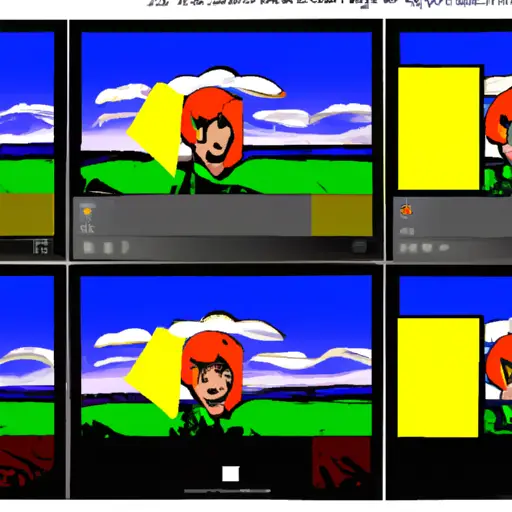Step-by-Step Guide to Taking Screenshots on Windows 10
Taking screenshots on Windows 10 is a simple and straightforward process. Follow the steps below to learn how to take screenshots on your Windows 10 device.
1. Press the “PrtScn” (Print Screen) button on your keyboard. This will capture an image of your entire screen and save it to your clipboard.
2. Open an image editing program such as Paint or Photoshop, then press “Ctrl + V” to paste the screenshot into the program.
3. Crop or edit the screenshot as desired, then save it in a desired file format such as JPEG or PNG by clicking “File > Save As” in the top menu bar of the program window and selecting a file type from the drop-down menu that appears when you click “Save As”
4. If you want to take a screenshot of only one window, press “Alt + PrtScn” instead of just pressing PrtScn by itself; this will capture only what is visible in that particular window rather than capturing everything on your screen at once
5. To take a screenshot of part of your screen, press “Windows key + Shift + S”; this will open up an overlay with options for taking rectangular snips, freeform snips, or full-screen snips; select whichever option best suits what you need and draw around whatever area you want captured before releasing mouse click; this will copy whatever was selected into your clipboard so that you can paste it into an image editing program like before
6 Finally, if you want to automatically save screenshots without having to manually paste them into another program first, press “Windows key + PrtScn” which will automatically save a full-screen screenshot directly onto your computer in PNG format within its own folder located at C:Users[Your Username]PicturesScreenshots
How to Use the Snipping Tool for Capturing Screenshots on Windows 10
The Snipping Tool is a useful utility for capturing screenshots on Windows 10. It allows users to capture all or part of their screen and save it as an image file. This guide will explain how to use the Snipping Tool for capturing screenshots on Windows 10.
First, open the Snipping Tool by searching for it in the Start Menu or typing “Snipping Tool” into the search bar at the bottom left of your screen. Once you have opened it, click on “New” to start a new snip. You can then select one of four snip types: Free-form, Rectangular, Window, or Full-screen.
Once you have selected your snip type, your screen will be dimmed and you can draw around what you want to capture with your mouse cursor. When you are finished drawing around what you want to capture, release your mouse button and the screenshot will be taken and saved in an image file format such as PNG or JPG in a folder of your choice.
You can also use additional features such as adding annotations like arrows and text boxes before saving the screenshot by clicking on “Edit & Save” after taking a screenshot with the Snipping Tool. You can also delay taking a screenshot up to five seconds if needed by clicking on “Delay” before taking a screenshot with any of the four snip types mentioned above.
Using these steps should help make capturing screenshots easier using Windows 10’s built-in Snipping Tool utility!
Q&A
Q1: How do I take a screenshot on Windows 10?
A1: To take a screenshot on Windows 10, press the “PrtScn” (Print Screen) key on your keyboard. This will capture the entire screen and save it to your clipboard. You can then paste it into an image editor or document to save it as an image file. Alternatively, you can also use the “Windows + PrtScn” shortcut to automatically save a copy of your screen as an image file in the Pictures > Screenshots folder.
Q2: How do I take a partial screenshot on Windows 10?
A2: To take a partial screenshot on Windows 10, press the “Windows + Shift + S” keys at the same time. This will open up an overlay that allows you to select any area of your screen that you want to capture. Once selected, this area will be saved directly to your clipboard and can be pasted into any image editor or document for further editing or saving as an image file.
